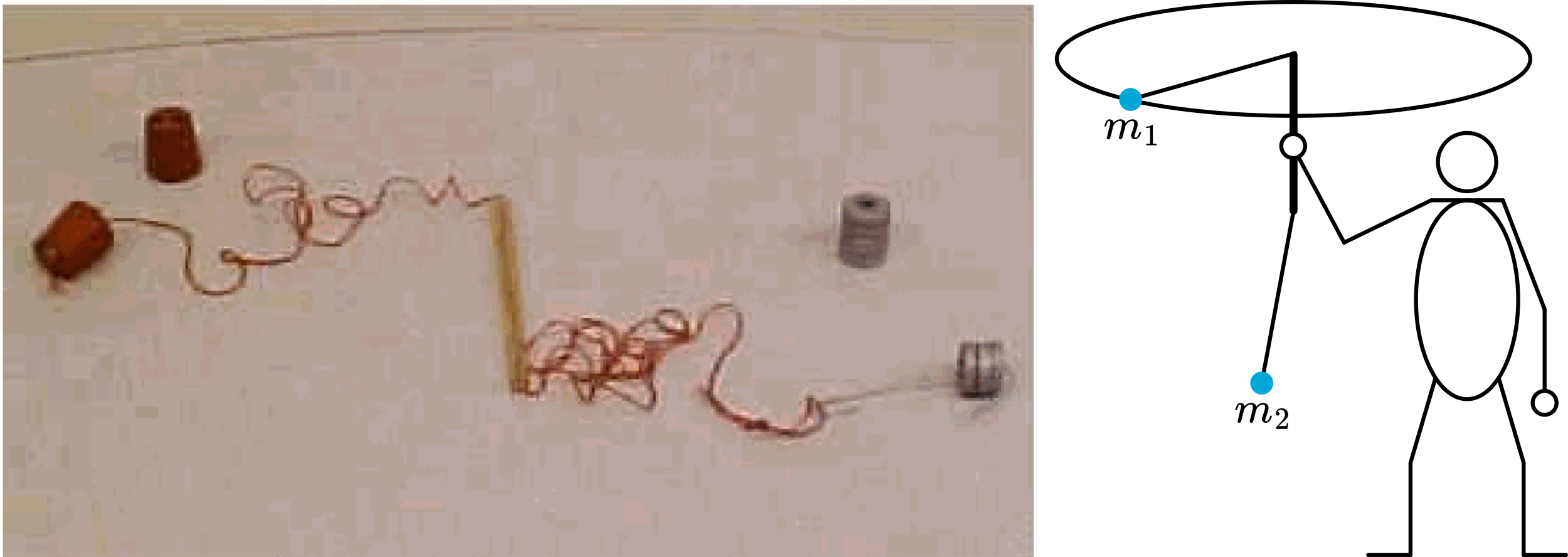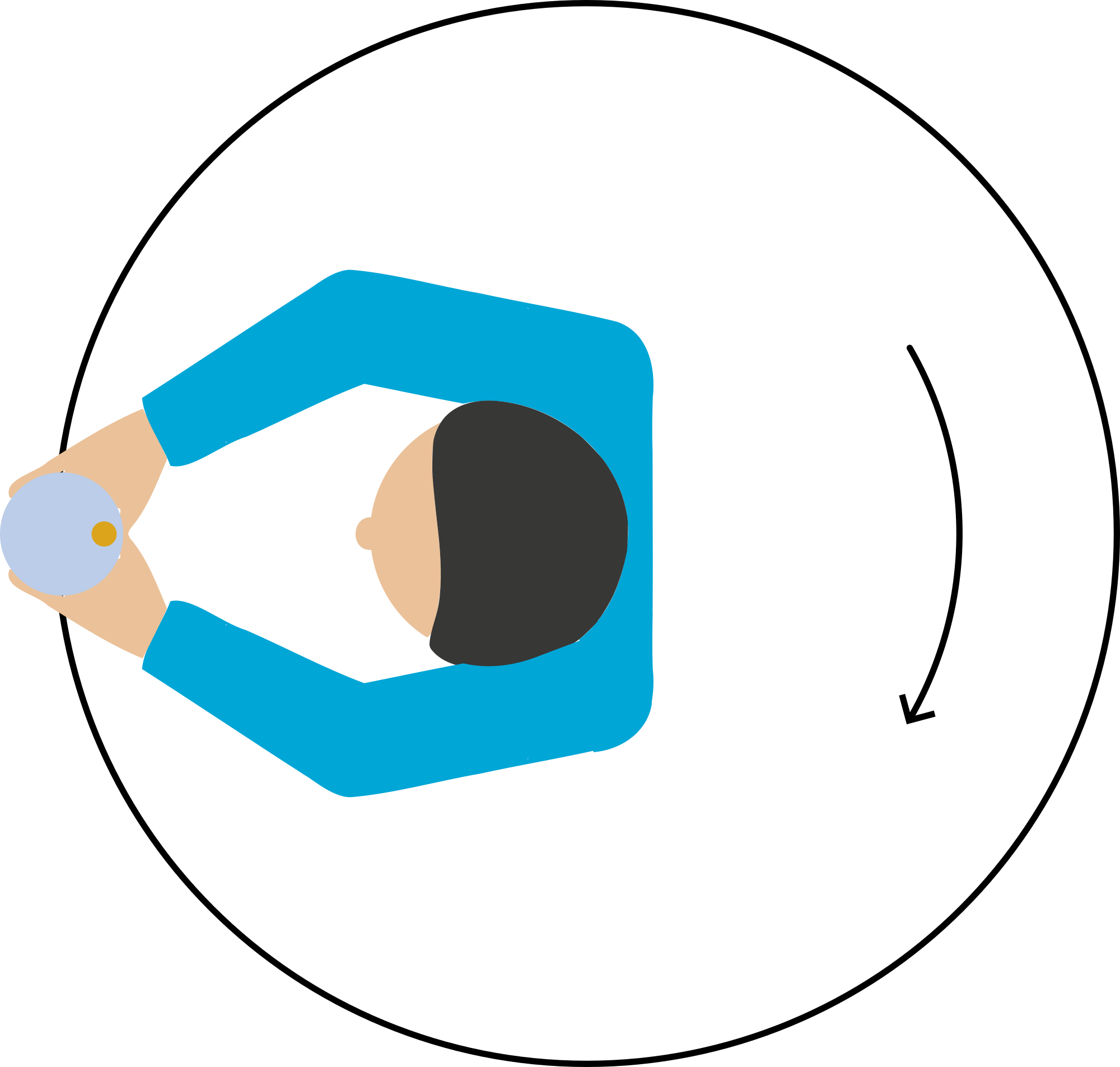03 Centripetal Force#
Aim#
To show an example of the centripetal force.
Subjects#
1D50 (Central Forces)
Diagram#

Fig. 27 .#
Equipment#
Conical beaker, \(2 \text{l}\), filled with water.
Rubber stop.
Ping-pong ball tied to rubber stop (see Diagram).
Safety#
The conical beaker filled with water is quite heavy (\(m \approx 2\text{kg}\)). Hold it firmly!
Presentation#
Hold the conical beaker filled with water upside-down in your hands. The ping-pong ball floats directly above the rubber stopper. Start turning in a circle, and while turning, observe the behaviour of the ping-pong ball (see Figure 28).

Fig. 28 .#
The ping-pong ball is displaced towards you.
Explanation#
The ping-pong ball, being completely immersed in water, experiences an upward buoyant force \(F_u\) that is greater than its weight \(m \cdot g\). The net force (\(F_u - m \cdot g\)) is directed upwards. The tension \(T\) in the string prevents the ping-pong ball from floating upwards (see Figure 29a).

Fig. 29 .#
When turning around in circles, the ping-pong ball is forced to move in a circle. A centripetal force is needed for that. Figure 29b shows the new situation of equilibrium: the net upward force and tension are compensated by a centripetal force \(F_{c}\). Any other position of the ping-pong ball is not a situation of equilibrium (drawing a free body diagram of the forces will show this).
Remarks#
When an air bubble is trapped in the conical beaker filled with water, this bubble will behave in the same way as the ping-pong ball does.
When you move the system from left to right, the acceleration on the left side and the deceleration on the right side can be observed. In general, the system can be used as an acceleration meter.
Sources#
Ehrlich, Robert, Turning the World Inside Out and 174 Other Simple Physics Demonstrations, pag. 31-32.
